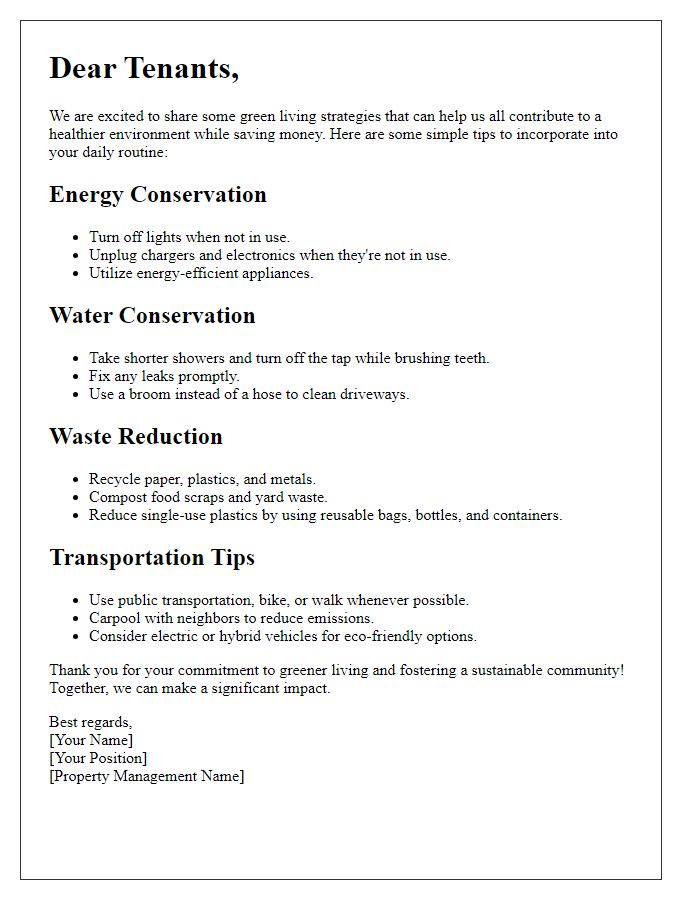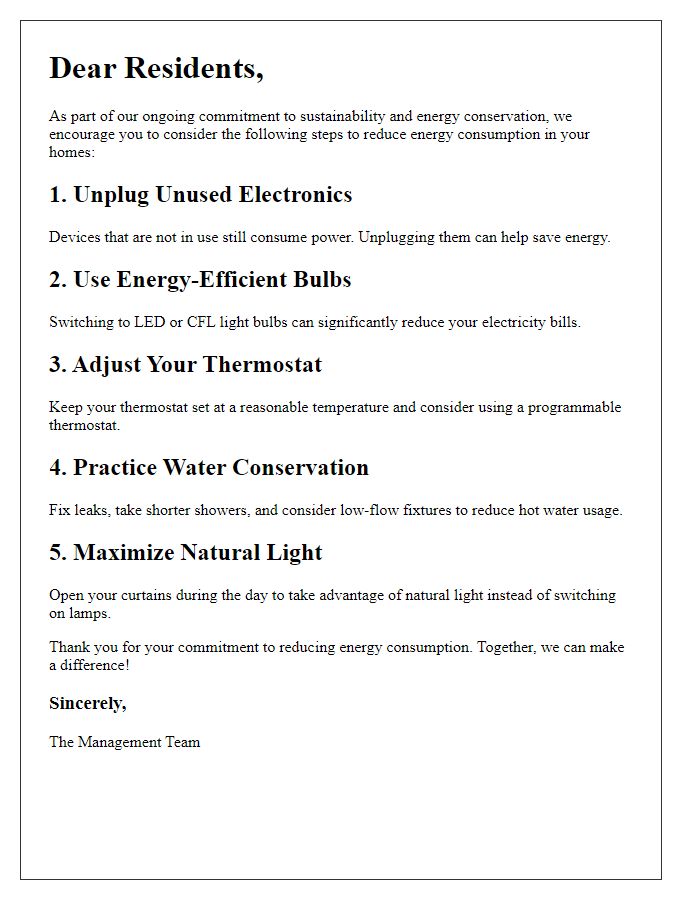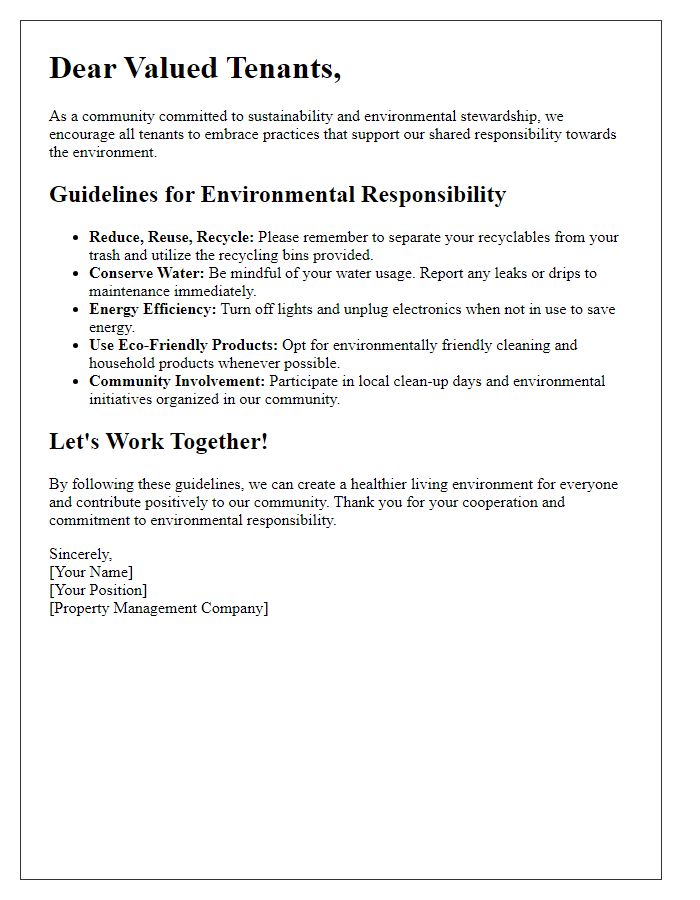Are you a tenant looking to lower your energy bills while making a positive impact on the environment? In this article, we'll share some practical energy efficiency tips that anyone can implement, regardless of your living situation. From simple changes in your daily habits to optimizing your home's setup, these strategies can help you save money and reduce your carbon footprint. So, let's dive in and explore how you can make the most of your space while saving energyâread on for some valuable insights!

Energy-efficient lighting options
Energy-efficient lighting options are essential for reducing electricity consumption and lowering utility bills in residential spaces. LED (Light Emitting Diode) bulbs, which use up to 80% less energy compared to traditional incandescent bulbs, last significantly longer with an average lifespan of 15,000 to 50,000 hours. Compact Fluorescent Lamps (CFLs) are another energy-saving alternative, using about 75% less energy than incandescents while providing equivalent brightness. Furthermore, smart bulbs equipped with Wi-Fi and Bluetooth technology can be programmed for automatic shut-off, further enhancing energy savings. Utilizing natural light by opening blinds during daylight hours can also decrease reliance on artificial lighting. Transitioning to energy-efficient lighting not only benefits personal budgets but also contributes positively to environmental sustainability efforts.
Cost-effective heating management
Cost-effective heating management involves several effective strategies to reduce energy consumption and lower bills. Setting thermostats to 20 degrees Celsius during the day and reducing it to 16 degrees Celsius at night can save significant energy without sacrificing comfort. Utilizing programmable thermostats, available in many hardware stores, allows tenants to automate heating schedules based on personal routines. Ensuring that doors and windows are properly sealed can prevent heat loss, with weatherstripping materials easily found at local home improvement centers. Regular maintenance of heating systems, such as cleaning filters every few months, can enhance efficiency, prolonging the lifespan of appliances like furnaces or boilers. Utilizing energy-efficient curtains or blinds can also help in minimizing heat loss, keeping living spaces cozy while saving on heating costs.
Smart appliance utilization
Smart appliances, including energy-efficient refrigerators, washing machines, and thermostats, can significantly reduce energy consumption in residential properties, promoting sustainability. Utilizing appliances with ENERGY STAR certification can lower electricity costs by approximately 10-50% compared to standard models. Smart thermostats, such as Nest or Ecobee, can learn usage patterns, optimizing heating and cooling systems based on occupancy, potentially yielding savings of up to 15% on energy bills. Additionally, programming washing machines during off-peak hours can capitalize on lower energy rates, as utilities often charge less during night-time usage. By fully integrating these smart technologies, tenants can enhance energy efficiency, leading to both financial savings and reduced environmental impact.
Proper insulation techniques
Proper insulation techniques significantly enhance energy efficiency in residential dwellings, such as apartments and single-family homes. Insulation materials, including fiberglass batts and foam boards, help reduce heat transfer, keeping interior spaces comfortable year-round. In areas like attics (often the primary source of heat loss), sealing gaps with spray foam or weatherstripping can minimize air leakage, preventing cold drafts during winter and heat retention in summer. Additionally, the recommended R-value (a measure of insulation's thermal resistance) varies by climate zone, with higher R-values suggested for colder regions (such as the northern United States, where R-values of 49 or above are ideal). Properly insulating walls and floors offers long-term cost savings, reducing energy bills and minimizing the environmental footprint associated with heating and cooling systems. Regular inspections for insulation integrity are essential for maintaining optimal performance and ensuring tenant comfort.
Water conservation practices
Implementing effective water conservation practices is essential for promoting sustainability, especially in residential spaces. Utilizing low-flow showerheads can reduce water usage by approximately 40%, while dual-flush toilets can decrease water consumption for each flush by up to 50%, contributing to significant savings over time. Regularly checking for leaks in faucets and toilets can prevent the loss of nearly 10,000 gallons annually, which is enough to fill a swimming pool. Collecting rainwater in barrels or using drip irrigation systems in gardens can save approximately 900 gallons of water per month during dry seasons. Furthermore, mindful practices such as only running dishwashers and washing machines with full loads can limit water usage to an estimated 400 gallons monthly per household. Fostering awareness of these practices can enhance energy efficiency and reduce water expenditure, contributing to a healthier environment.













Comments